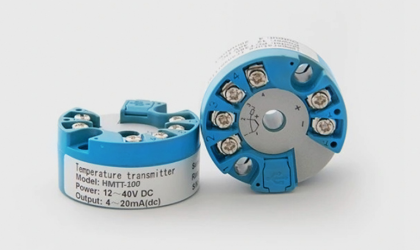Working Principle of temperature sensor
A temperature sensor operates by detecting temperature variations and converting them into an electrical signal. Different sensor types function based on specific principles. For instance, an RTD (Resistance Temperature Detector) relies on the predictable change in resistance of a metal, typically platinum, with temperature variations. A thermocouple generates a voltage based on the Seebeck effect, where two different metals form a junction, and the resulting voltage is proportional to the temperature difference. Thermistors, made of semiconductor materials, exhibit a significant change in resistance with temperature, making them highly sensitive. Infrared temperature sensors detect the thermal radiation emitted by an object and convert it into an electrical signal, enabling non-contact temperature measurement.
Once the sensor captures the temperature data, the raw electrical signal it generates is typically weak and requires further processing before transmission. This is where the temperature transmitter comes into play. The transmitter conditions the sensor signal by amplifying it, linearizing the response, and filtering out noise to enhance accuracy. It then converts the processed signal into a standardized output, such as a 4-20mA current signal or digital communication protocols like HART or Modbus. This conditioned signal is then transmitted to a control system, PLC, or display unit for real-time monitoring, control, and data logging of temperature measurements.


